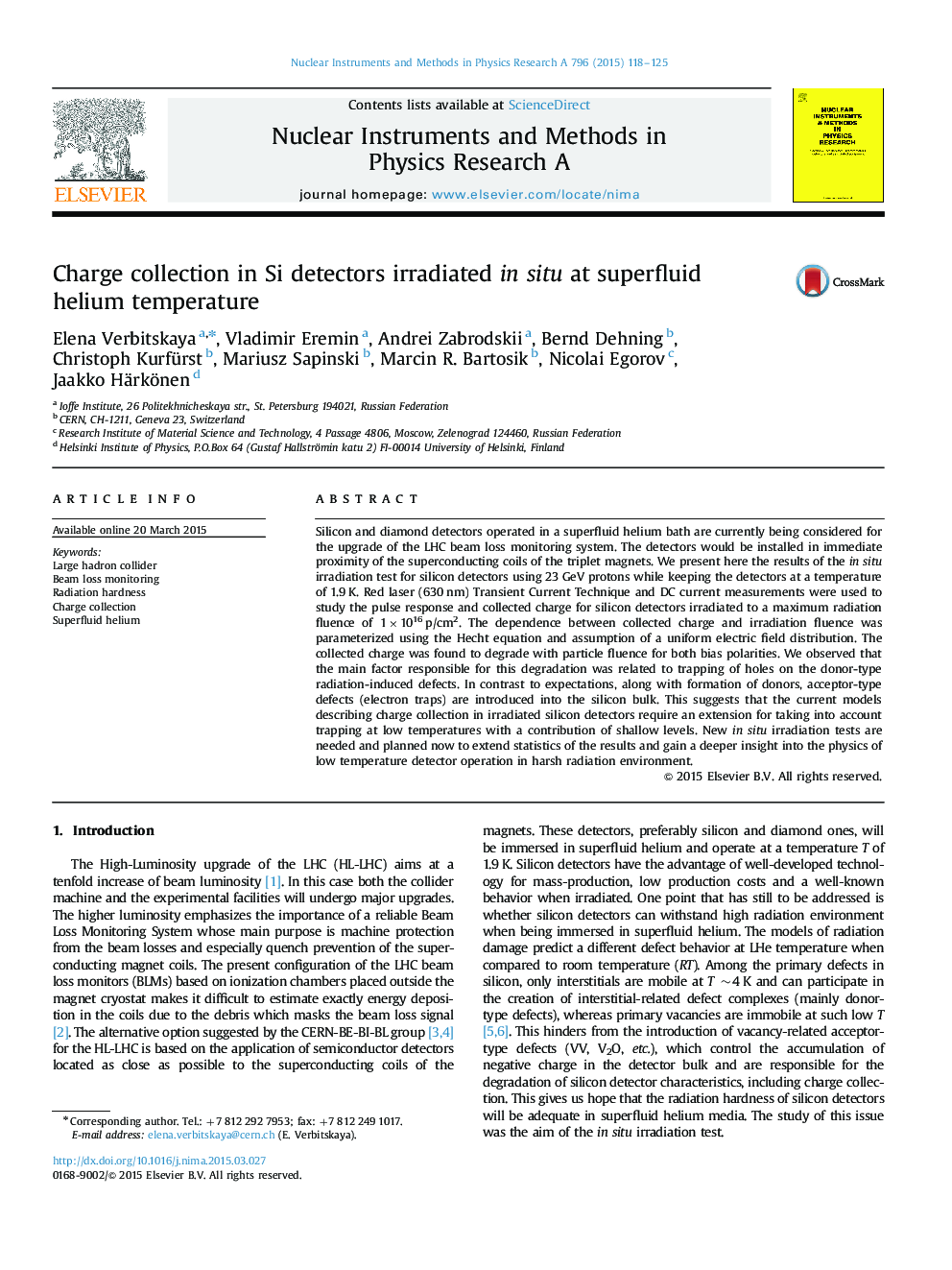| Article ID | Journal | Published Year | Pages | File Type |
|---|---|---|---|---|
| 8172417 | Nuclear Instruments and Methods in Physics Research Section A: Accelerators, Spectrometers, Detectors and Associated Equipment | 2015 | 8 Pages |
Abstract
Silicon and diamond detectors operated in a superfluid helium bath are currently being considered for the upgrade of the LHC beam loss monitoring system. The detectors would be installed in immediate proximity of the superconducting coils of the triplet magnets. We present here the results of the in situ irradiation test for silicon detectors using 23Â GeV protons while keeping the detectors at a temperature of 1.9Â K. Red laser (630Â nm) Transient Current Technique and DC current measurements were used to study the pulse response and collected charge for silicon detectors irradiated to a maximum radiation fluence of 1Ã1016Â p/cm2. The dependence between collected charge and irradiation fluence was parameterized using the Hecht equation and assumption of a uniform electric field distribution. The collected charge was found to degrade with particle fluence for both bias polarities. We observed that the main factor responsible for this degradation was related to trapping of holes on the donor-type radiation-induced defects. In contrast to expectations, along with formation of donors, acceptor-type defects (electron traps) are introduced into the silicon bulk. This suggests that the current models describing charge collection in irradiated silicon detectors require an extension for taking into account trapping at low temperatures with a contribution of shallow levels. New in situ irradiation tests are needed and planned now to extend statistics of the results and gain a deeper insight into the physics of low temperature detector operation in harsh radiation environment.
Related Topics
Physical Sciences and Engineering
Physics and Astronomy
Instrumentation
Authors
Elena Verbitskaya, Vladimir Eremin, Andrei Zabrodskii, Bernd Dehning, Christoph Kurfürst, Mariusz Sapinski, Marcin R. Bartosik, Nicolai Egorov, Jaakko Härkönen,
